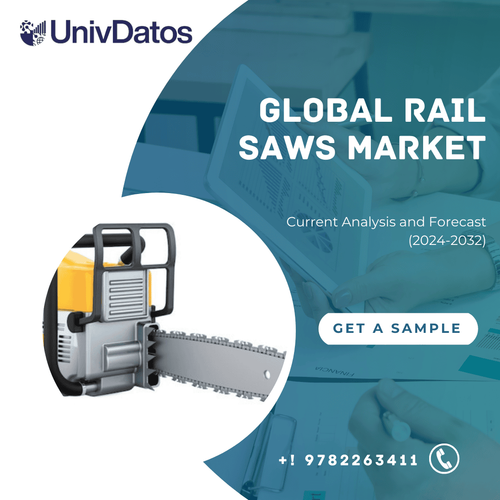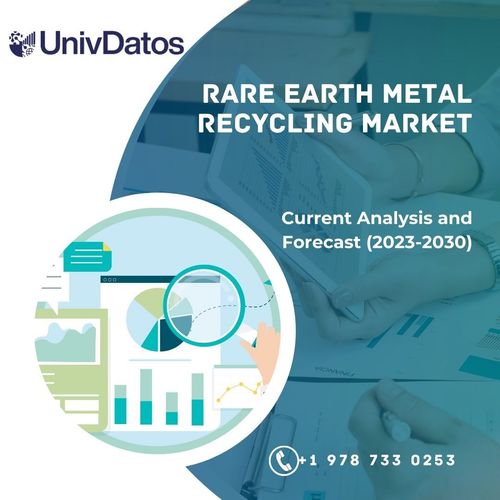Kaolin Market: Current Analysis and Forecast (2023-2030)
Emphasis on Process (Wet, and Dry); Application (Paper & Paperboard, Ceramics & Sanitary Ware, Fiberglass, Paints & Coatings, and Others); Region/Country.
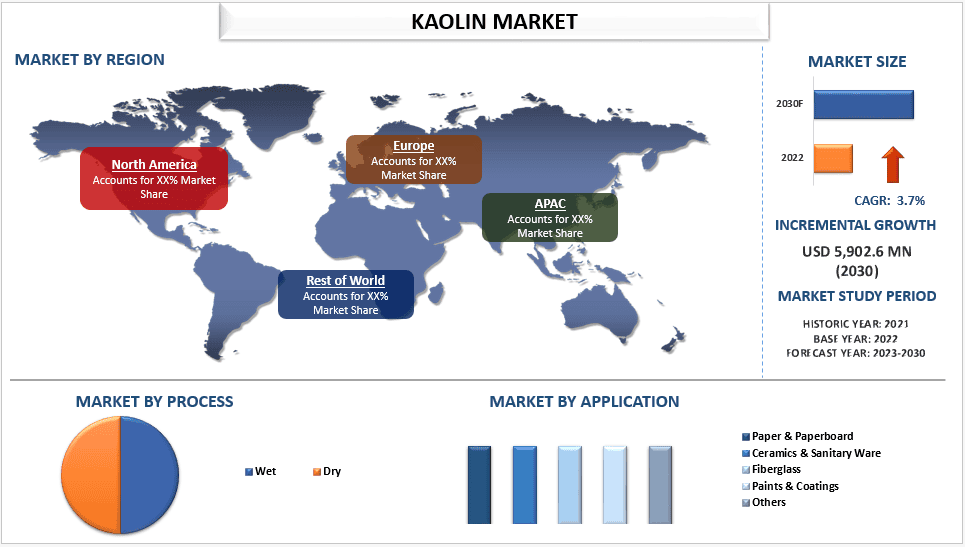
The global Kaolin market was valued at USD 4,396.9 Million in 2022 and is expected to grow a CAGR of 3.7% during the forecast period (2023-2030). In the ceramic industry, it is used alone or mixed with other components to achieve specific properties for forming and firing ware. Additionally, kaolin is used for filling rubber to improve its mechanical strength, as an extender and flattening agent in paints, and in adhesives for paper to control penetration. It is also used in ink, organic plastics, and some cosmetics due to its very fine particle size and whiteness.
The kaolin marketplace is anticipated to develop extensively due to growing call for from diverse industries, including paper manufacture, paints and coatings, and ceramic manufacture. The paper enterprise obtained the bulk percentage in the kaolin marketplace worldwide, wherein it’s far used as a filler or coating. Kaolin will increase gloss, smoothness, brightness and paint absorbency of the paper, which improves the printability. Additionally, Future demand for kaolin as an input for new technologies and products will continue to evolve as the telecommunications and electronics industries refine existing manufacturing processes and supply chains to match evolving consumer preferences.
Some of the major players operating in the market include Kaolin AD, Quartz Works GmbH, Imerys, KaMin LLC, Ashapura Group, KERAMOST, a.s., I-Minerals, EICL, SCR-Sibelco NV, and Thiele Kaolin Company. Several M&As along with partnerships have been undertaken by these players to facilitate customers with hi-tech and innovative products/technologies.
Insights Presented in the Report
“Amongst Process, the Dry segment would grow with significant CAGR during the forecast period”
Based on Process, the Kaolin Market is bifurcated into Wet and Dry segments. The dry segment acquired a majority share in the Kaolin Market and is expected to register a substantial growth rate during the forecast period. Dry processing involves fewer steps and is less expensive than wet processing, making it a more straightforward and cost-effective method. Furthermore, Dry-processed kaolin is suitable for various industrial applications, such as rubber manufacturing, paper-filling, fiberglass, and sanitary ware. Moreover, Dry processing consumes less energy compared to wet processing, making it a more environmentally friendly option. Although the wet process produces a higher quality kaolin, it is mainly used in the paper industry.
“Amongst Application, the Ceramic and Fiberglass category would grow with significant CAGR during the forecast period”
Based on Application, the Kaolin Market is divided into Paper & Paperboard, Ceramics & Sanitary Ware, Fiberglass, Paints & Coatings, and Others segments. The Paper & Paperboard segment acquired a majority share in the Kaolin Market, However, Ceramics & Sanitary Ware and Fiberglass segment is expected to showcase the highest growth during the forecast period. A growing quantity of ceramic production organizations in China has contributed to the increase of the kaolin enterprise in recent years. A rising intake of fiberglass is expected, as fiberglass composites and their advanced power-to-weight ratios, are predicted to Increase gasoline utilization in car and aerospace sectors.
“APAC to grow with high CAGR during forthcoming”
APAC registered the highest market share in the Kaolin Market and is expected to witness an influential CAGR in the forecasted period. The Kaolin market in the Asia Pacific region is experiencing significant growth, driven by the increasing demand from countries like China, India, Japan, and South Korea. Additionally, the strong economic growth and increasing industrialization in economies like India, China, and Japan are expected to further drive the Kaolin market in the Asia Pacific region. Rising intake of fiberglass is expected, as fiberglass composites and their advanced strength-to-weight ratios, are predicted to Increase gas usage in car and aerospace sectors. Outside of China, countries such as India, Vietnam, Japan, and South Korea are set to be the primary members driving the growth in the Asia-Pacific kaolin marketplace during the forecast period. Opportunities are rising in the marketplace as customers are starting to apprehend the significance of product quality and brightness. The increasing populace and growing customer standard of living will act as a catalyst in the growth of the APAC kaolin market ceramic merchandise in housing and construction.
Kaolin Market Report Coverage
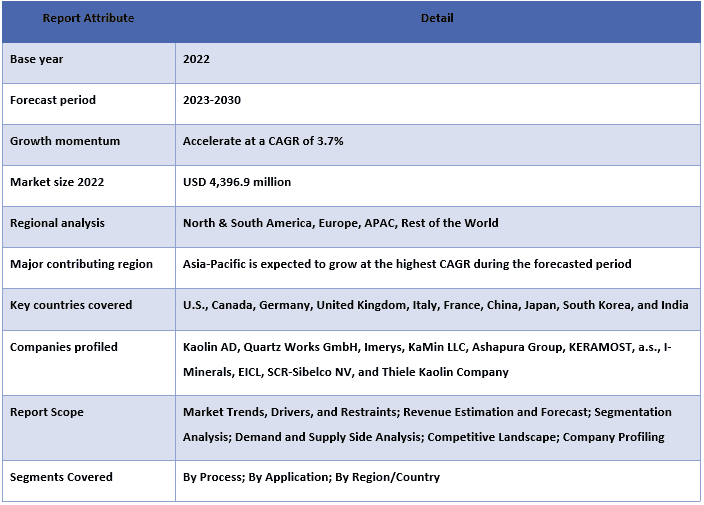
Reasons to buy this report:
- The study includes market sizing and forecasting analysis validated by authenticated key industry experts.
- The report presents a quick review of overall industry performance at one glance.
- The report covers an in-depth analysis of prominent industry peers with a primary focus on key business financials, product portfolios, expansion strategies, and recent developments.
- Detailed examination of drivers, restraints, key trends, and opportunities prevailing in the industry.
- The study comprehensively covers the market across different segments.
- Deep dive regional level analysis of the industry.
Customization Options:
The global Kaolin market can further be customized as per the requirement or any other market segment. Besides this, UMI understands that you may have your own business needs, hence feel free to connect with us to get a report that completely suits your requirements.
Table of Contents
Research Methodology for the Kaolin Market Analysis (2023-2030)
Analyzing the historical market, estimating the current market, and forecasting the future market of the global Kaolin market were the three major steps undertaken to create and analyze the adoption of Kaolin in major regions globally. Exhaustive secondary research was conducted to collect the historical market numbers and estimate the current market size. Secondly, to validate these insights, numerous findings and assumptions were taken into consideration. Moreover, exhaustive primary interviews were also conducted, with industry experts across the value chain of the global Kaolin market. Post assumption and validation of market numbers through primary interviews, we employed a top-down/bottom-up approach to forecasting the complete market size. Thereafter, market breakdown and data triangulation methods were adopted to estimate and analyze the market size of segments and sub-segments of the industry pertains to. Detailed methodology is explained below:
Analysis of Historical Market Size
Step 1: In-Depth Study of Secondary Sources:
Detail secondary study was conducted to obtain the historical market size of the Kaolin market through company internal sources such as annual reports & financial statements, performance presentations, press releases, etc., and external sources including journals, news & articles, government publications, competitor publications, sector reports, third-party database, and other credible publications.
Step 2: Market Segmentation:
After obtaining the historical market size of the Kaolin market, we conducted a detailed secondary analysis to gather historical market insights and share for different segments & sub-segments for major regions. Major segments are included in the report as Process, and Application. Further country-level analyses were conducted to evaluate the overall adoption of testing models in that region.
Step 3: Factor Analysis:
After acquiring the historical market size of different segments and sub-segments, we conducted a detailed factor analysis to estimate the current market size of the Kaolin market. Further, we conducted factor analysis using dependent and independent variables such as Process, and Application of the Kaolin market. A thorough analysis was conducted for demand and supply-side scenarios considering top partnerships, mergers and acquisitions, business expansion, and product launches in the Kaolin market sector across the globe.
Current Market Size Estimate & Forecast
Current Market Sizing: Based on actionable insights from the above 3 steps, we arrived at the current market size, key players in the global Kaolin market, and market shares of the segments. All the required percentage shares split, and market breakdowns were determined using the above-mentioned secondary approach and were verified through primary interviews.
Estimation & Forecasting: For market estimation and forecast, weights were assigned to different factors including drivers & trends, restraints, and opportunities available for the stakeholders. After analyzing these factors, relevant forecasting techniques i.e., the top-down/bottom-up approach were applied to arrive at the market forecast for 2030 for different segments and sub-segments across the major markets globally. The research methodology adopted to estimate the market size encompasses:
- The industry’s market size, in terms of revenue (USD) and the adoption rate of the Kaolin market across the major markets domestically
- All percentage shares, splits, and breakdowns of market segments and sub-segments
- Key players in the global Kaolin market in terms of products offered. Also, the growth strategies adopted by these players to compete in the fast-growing market
Market Size and Share Validation
Primary Research: In-depth interviews were conducted with the Key Opinion Leaders (KOLs) including Top Level Executives (CXO/VPs, Sales Head, Marketing Head, Operational Head, Regional Head, Country Head, etc.) across major regions. Primary research findings were then summarized, and statistical analysis was performed to prove the stated hypothesis. Inputs from primary research were consolidated with secondary findings, hence turning information into actionable insights.
Split of Primary Participants in Different Regions
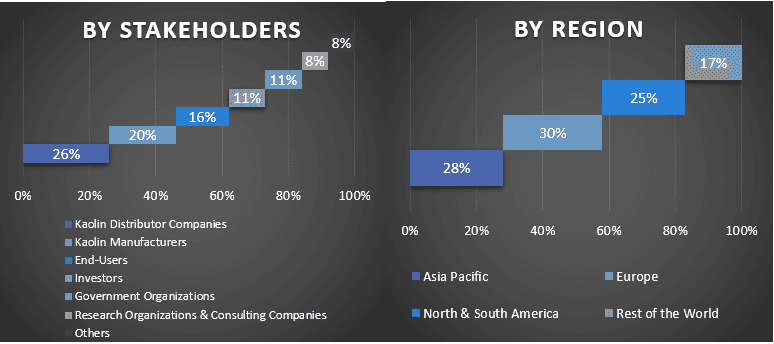
Market Engineering
The data triangulation technique was employed to complete the overall market estimation and to arrive at precise statistical numbers for each segment and sub-segment of the global Kaolin market. data was split into several segments & sub-segments post studying various parameters and trends in the areas of the Process, and Application in the global Kaolin market.
The main objective of the Global Kaolin Market Study
The current & future market trends of the global Kaolin market were pinpointed in the study. Investors can gain strategic insights to base their discretion for investments on the qualitative and quantitative analysis performed in the study. Current and future market trends determined the overall attractiveness of the market at a regional level, providing a platform for the industrial participant to exploit the untapped market to benefit from a first-mover advantage. Other quantitative goals of the studies include:
- Analyze the current and forecast market size of the Kaolin market in terms of value (USD). Also, analyze the current and forecast market size of different segments and sub-segments
- Segments in the study include areas of the Process, and Application
- Define and analysis of the regulatory framework for the Kaolin industry
- Analyze the value chain involved with the presence of various intermediaries, along with analyzing customer and competitor behaviors of the industry
- Analyze the current and forecast market size of the Kaolin market for the major region
- Major countries of regions studied in the report include Asia Pacific, Europe, North & South America, and the Rest of the World
- Company profiles of the Kaolin market and the growth strategies adopted by the market players to sustain in the fast-growing market
- Deep dive regional level analysis of the industry
Frequently Asked Questions FAQs
Q1: What is the current market size and growth potential of the global Kaolin market?
Q2: What are the driving factors for the growth of the global Kaolin Market?
Q3: Which segment has the largest share of the global Kaolin market by Application?
Q4: What are the emerging technologies and trends in the global Kaolin market?
Q5: Which region will dominate the global Kaolin market?
Q6: Who are the key players operating in the global Kaolin market?
Related Reports
Customers who bought this item also bought






